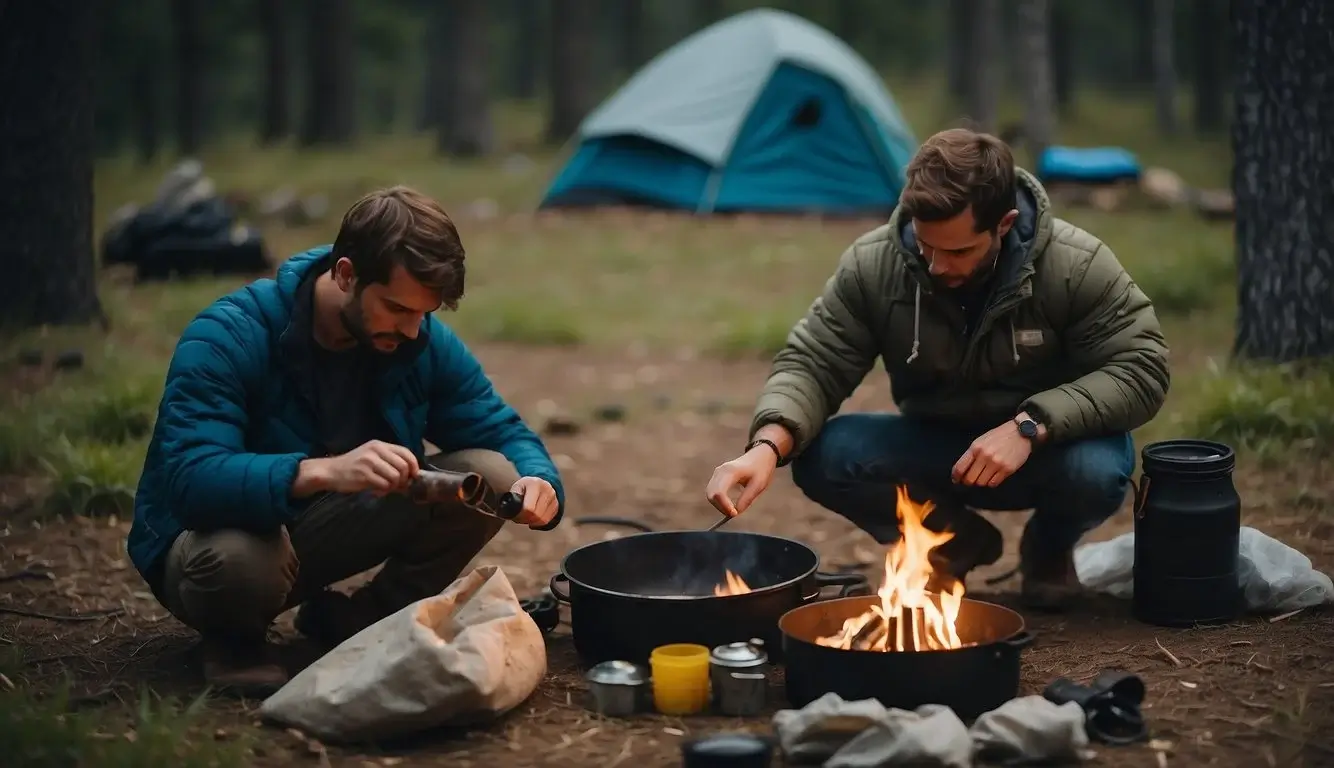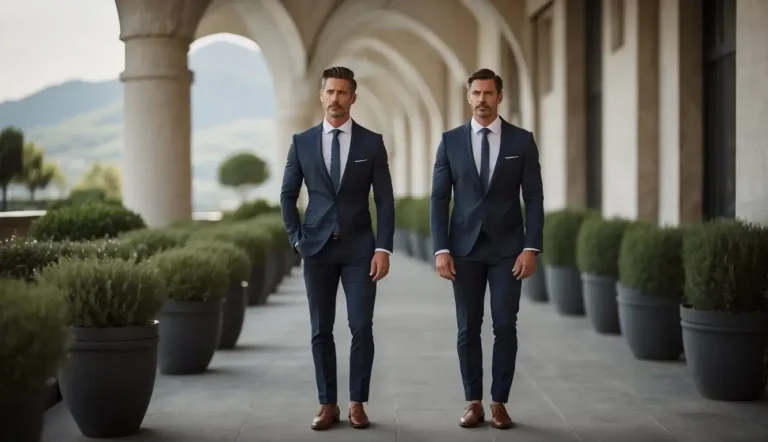Camping connects us with the natural world, urging us to pay attention to our surroundings and fellow campers. The moments I’ve spent beneath the starry sky have underscored the importance of adhering to good camping etiquette. Simple behaviors, like keeping noise levels down, responsibly getting rid of trash, and safely enjoying campfires, are crucial.
These practices ensure a positive experience for all campers and help preserve the natural beauty for those who follow. Embracing these principles of camping etiquette, whether you’re a seasoned explorer or a first-timer, contributes to a harmonious outdoor adventure and safeguards the great outdoors for future enjoyment.
Key Takeaways
- Proper camping etiquette ensures a harmonious and enjoyable experience for all campers.
- Being mindful of noise, waste, and campfires protects fellow campers and the environment.
- Consideration and preparedness are key to a successful and respectful camping trip.
Choosing the Right Campsite
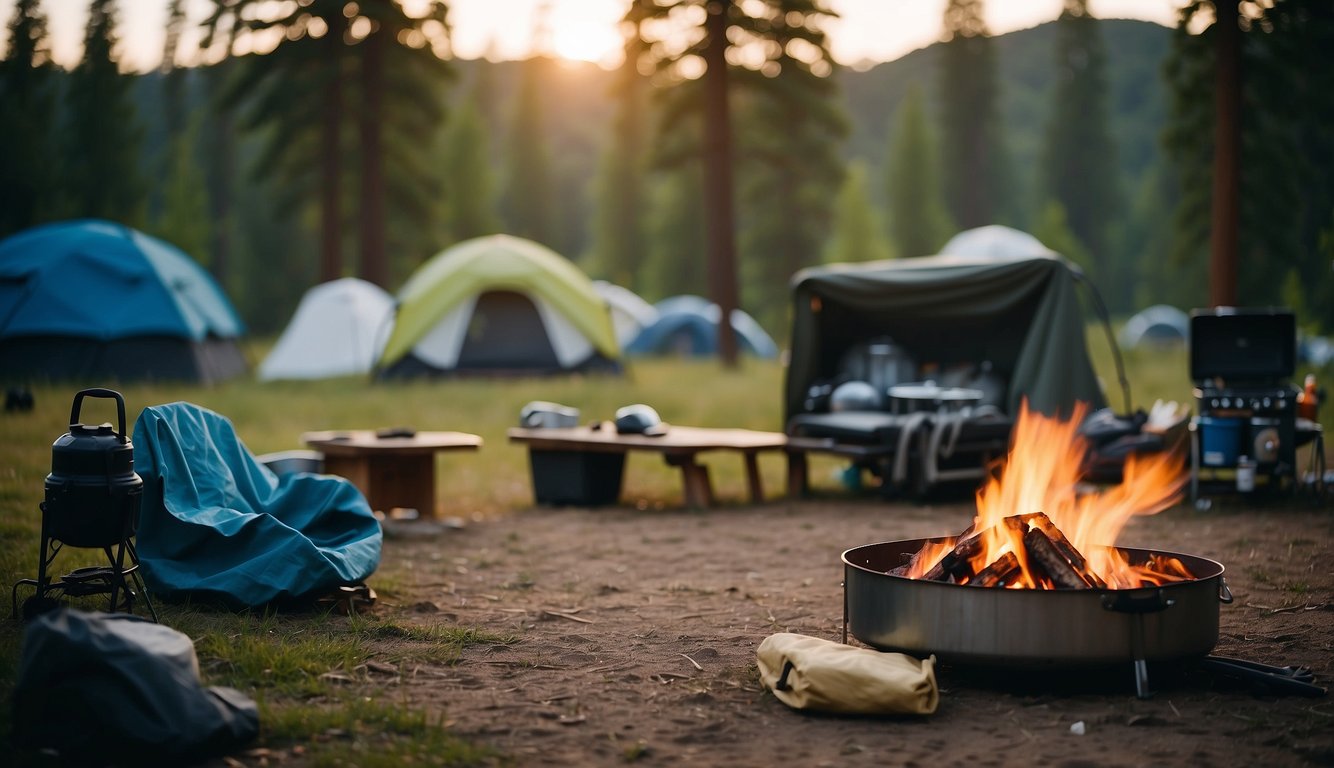
When I look for a campsite, the goal is always finding that perfect spot where I can enjoy nature while being considerate of others and the environment. Here, I’ll share some insights on how to pick the ideal place.
Assessing Campsite Quality
The quality of a campsite can make or break my camping experience. I always check for a level ground to pitch my tent, but there’s more to consider. Availability of shade, nearby water sources, and absence of insect nests are crucial factors.
Understanding Campground Regulations
Each time I arrive at a campground, I make it a point to familiarize myself with the local rules. These might be about campfire usage, noise levels, or pet policies. It’s important to respect these guidelines to preserve the area for future visitors as I read on Our Ultimate Guide to Camping Etiquette – Outdoors with Bear Grylls.
Maximizing Personal Space and Privacy
I appreciate my privacy, and I’m sure others do, too. When selecting a campsite, maintaining distance from neighboring sites is central. I aim for at least a couple of standard car lengths between my camp and the next, to give everyone enough space to relax and enjoy their experience.
Respecting Designary Areas
Adherence to designated areas, be they for camping, parking, or hiking, is something I take seriously. It’s not only about following the rules but reducing my environmental impact. I stick to existing campsite spots to avoid damaging the surrounding flora and fauna, ensuring the campground is preserved in its natural state.
Setting Up Your Camp

When I set up camp, my top priorities are finding the right spot for my tent, managing food and waste responsibly, using fire rings without causing harm, and minimizing my impact on the environment.
Tent Placement
I always look for a flat, durable surface to pitch my tent, making sure it’s at least 200 feet away from water sources to prevent pollution. I also maintain a reasonable distance from other campers to ensure everyone’s privacy.
Managing Food and Waste
To keep a clean campsite, I store my food in airtight containers and dispose of waste properly. I pack out all my trash and leftovers, ensuring no traces are left behind.
Using Fire Rings Safely
If there’s a fire ring available, I use it to minimize campfire impacts. I keep fires small and always extinguish them thoroughly, making sure cold to the touch before leaving the site or going to sleep.
Minimizing Your Camping Footprint
I closely follow the Leave No Trace principles, staying on designated trails and camping on existing sites. I aim to leave the place exactly as I found it, or even better, for future campers to enjoy.
Behavior and Courtesy

Proper behavior and courtesy to others are paramount in camping. My focus is to ensure a harmonious camping environment by respecting certain protocols, like observing quiet hours and managing noise levels, maintaining cleanliness, considering my fellow campers, and preserving the natural surroundings for everyone to enjoy.
Adhering to Quiet Hours
I always make it a point to know the campground’s quiet hours; they’re crucial for everyone’s rest. To ensure I don’t disturb others, I typically keep activities low-key during these times. At most campsites, quiet hours usually start around 10 p.m. and go until 6 a.m.
Volume Control and Noise Levels
Managing volume and overall noise levels is a sign of respect. I keep my music and conversations at a level that won’t intrude on others’ space. If I bring speakers, they are for my ears only; I never assume my taste in music is shared by my camping neighbors.
Ensuring Cleanliness
A clean campsite is a happy campsite. I always clean up after myself, leaving the site as pristine as when I arrived or even cleaner. Bringing along extra trash bags is a small step I take to ensure cleanliness for the next group of campers.
Being Mindful of Neighbors
I find being considerate of others goes a long way. Whether that’s lending a helping hand with a stuck tent peg or being mindful of my campsite footprint, I strive to be considerate of my neighbors. A friendly wave or greeting can often lead to new friendships too!
Leaving What You Find
Lastly, I hold the principle of “leave what you find” dearly. Nature’s gifts aren’t mine to take, be they beautiful rocks or wildflowers. This practice not only preserves the beauty for others but also respects the environment’s delicate balance.
Respecting the Environment
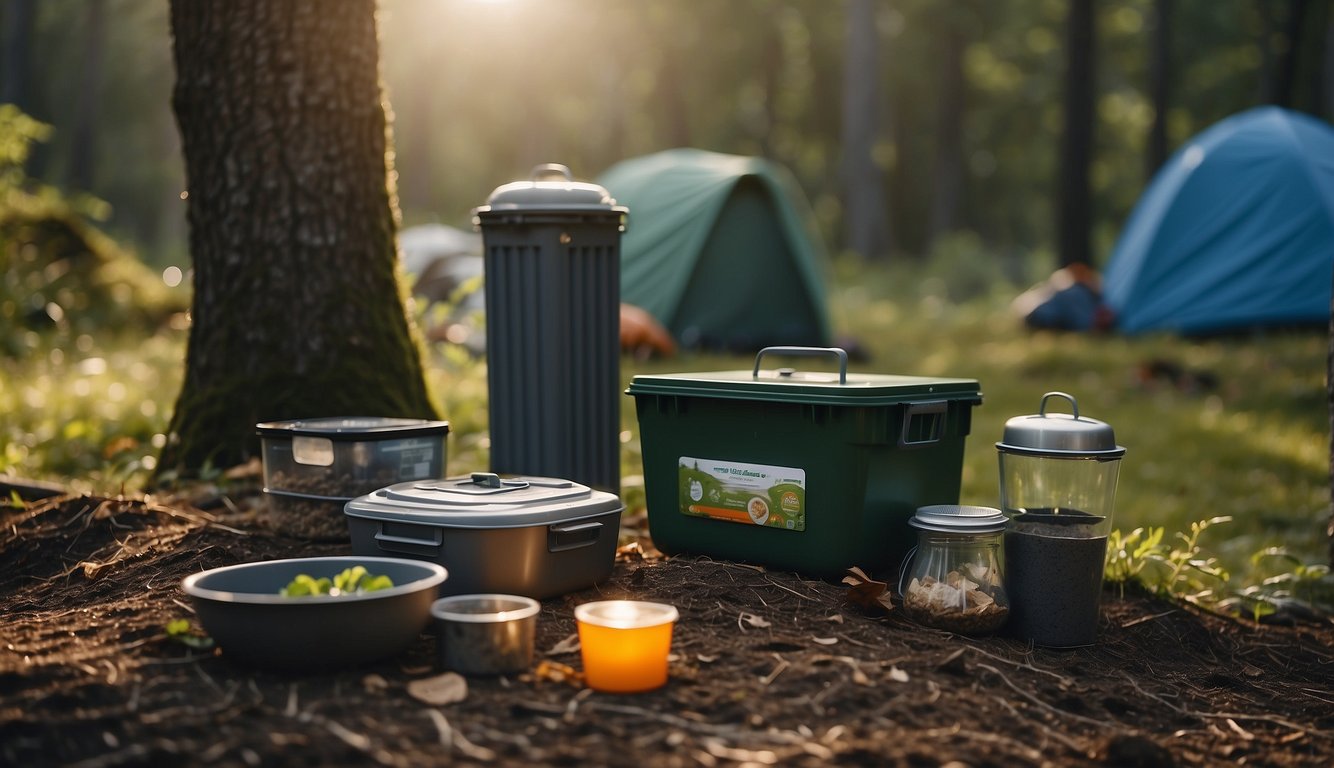
When I go camping, I consider the environment to be a precious guest. Every action I take should leave it undisturbed, ensuring the beauty and vitality of the natural world for those who follow.
Practicing Leave No Trace
I always adhere to the Leave No Trace principles. This means packing out everything I pack in, moving through the environment without causing disruption, and leaving each site just as I found it, if not better. I’m conscious not to harm plant life or geological features.
Handling Garbage and Recycling
Dealing with garbage and recycling is straightforward: I separate recyclables and ensure they make it to the proper disposal facilities. All trash is packed out, as litter can harm the environment and wildlife. I secure my waste to prevent it from being scattered by animals or the wind.
Preventing Fires and Forest Damage
I maintain vigilance regarding campfire safety to prevent forest fires. Before igniting any fire, I check for fire restrictions and use established fire rings when available. I keep fires small and supervised and extinguish them completely, dousing them with water, stirring ashes, and checking for remaining heat before departure.
Protecting Wildlife and Ecosystems
Interacting with wildlife is a privilege, and I respect their space by observing from a distance. I store food securely to avoid attracting animals, protecting them and me. Invasive species are a no-go — I clean my gear before and after trips to avoid transporting non-native plants or insects. My actions are intentional to shield the delicate balance of the ecosystem.
Camping With Children and Pets
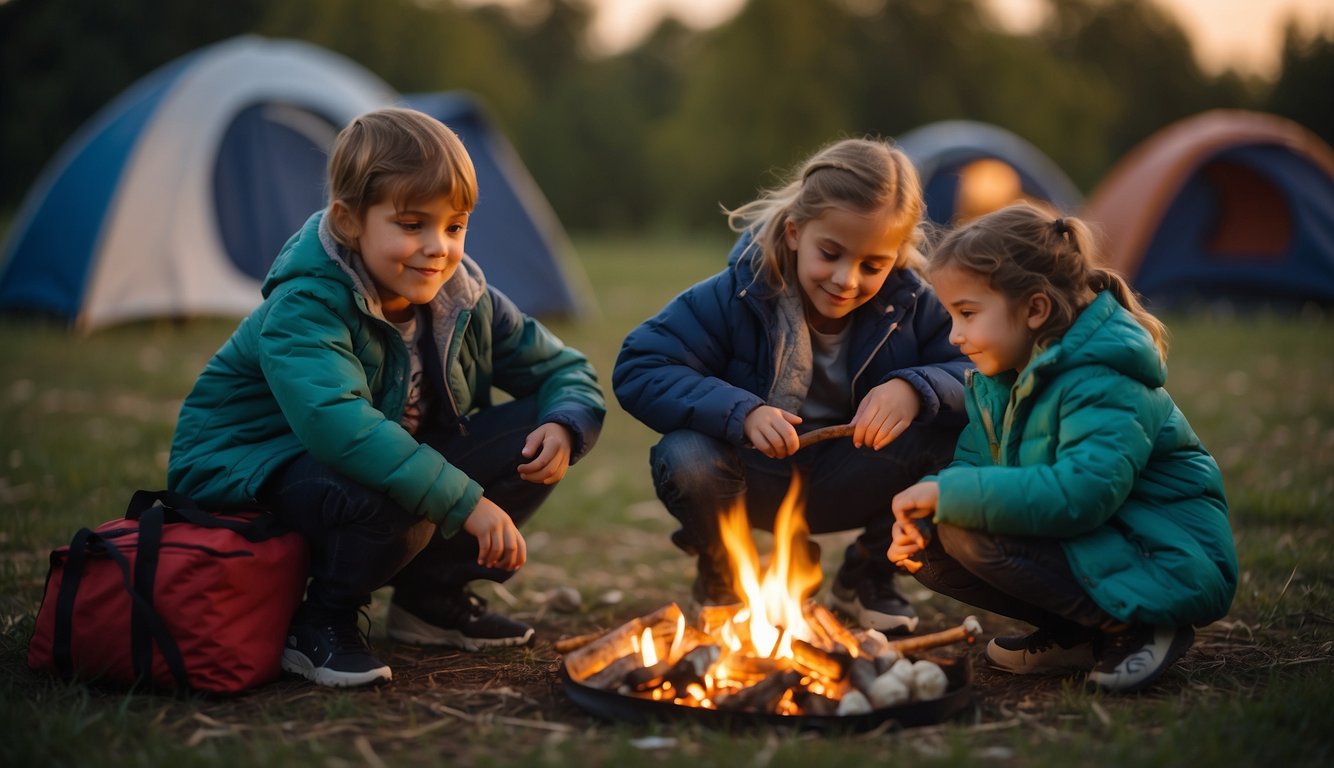
When I take my family camping, I’ve found that managing the dynamics with children and pets requires a few targeted strategies. Focusing on safety and respect for others enhances the experience for everyone at the campground.
Supervising Kids and Pets
I always keep a watchful eye on my kids and pets. Ensuring kids don’t wander off and pets are secured prevents disturbances and keeps them safe. Here’s my quick checklist:
- Children: Teach them about campground boundaries and use walkie-talkies to stay in touch.
- Pets: Ensure they’re on a leash unless in a designated off-leash area.
Dog Etiquette on the Campgrounds
Camping with dogs means being mindful of their interaction with the environment and other campers. I follow these dog etiquette rules:
- Leash Length: A leash no longer than 6 feet avoids entanglements.
- Barking: I use a collar or other training tools to minimize noise if my dog is a barker.
Encouraging Outdoor Recreation
I encourage my kids and dogs to engage in outdoor activities. It’s great for their health and helps them appreciate nature. Here’s how I incorporate outdoor recreation:
- Explore Together: We hike on pet-friendly trails.
- Play Games: Fetch for dogs and nature scavenger hunts for kids keep them active and entertained.
Fire Safety and Campfire Etiquette
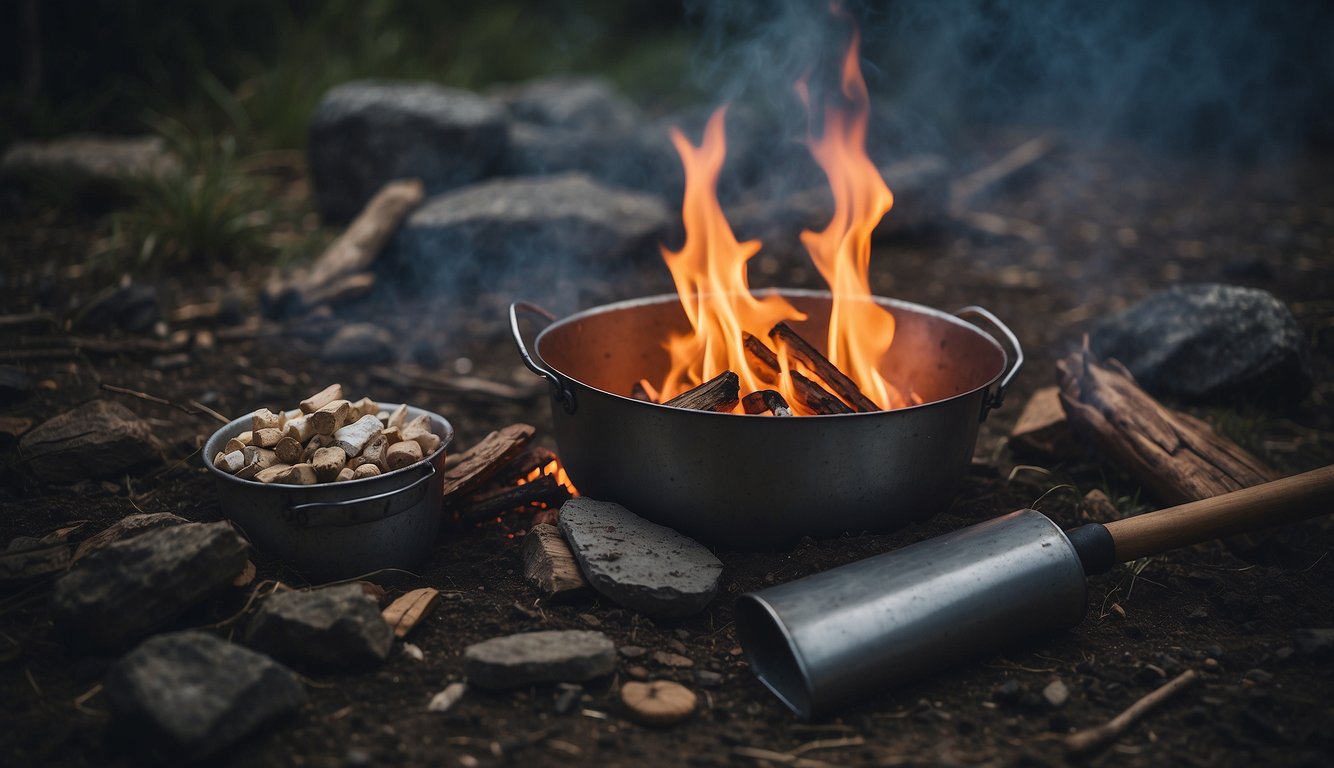
In my camping adventures, I’ve learned that maintaining fire safety and observing proper campfire etiquette are critical for a positive outdoors experience. They preserve nature and ensure everyone can enjoy their time camping without unnecessary risks.
Following Fire Regulations
When I first set out to camp, I check the local fire regulations meticulously. This means looking for specific rules about campfire locations permitted and any firewood restrictions. Regulations often specify the type of firewood you can use, which helps prevent the spread of invasive species. Using only the designated firewood and ensuring my campfire is within the confines of a fire ring, when provided, are steps I take seriously. Regulations might also dictate the distance a fire must be from tents and flammable materials, usually around 15 feet.
Safe Use of Campfires and Stoves
Building a campfire is a quintessential part of camping for me, but it carries responsibility. I always ensure to clear a wide area around the fire site, removing any dry leaves, twigs, or debris that could catch fire. Stacking rocks around the ring of the fire pit helps contain embers. After enjoying the warmth and cooking over the flames, dousing the fire until it’s cold to the touch is a step I never skip before heading to bed or leaving the campsite.
Dealing With Fire Bans
Sometimes, I encounter a fire ban during particularly dry seasons. While it may dampen the traditional campfire experience, I respect these bans for the safety of all. Alternatives like portable gas stoves are a go-to for me, as they are often allowed under these bans. I always confirm the specific terms of a fire ban before using any campfire or stove. It’s also a good habit to have a reliable water source or a fire extinguisher nearby in case of emergency.
Interacting With Other Campers
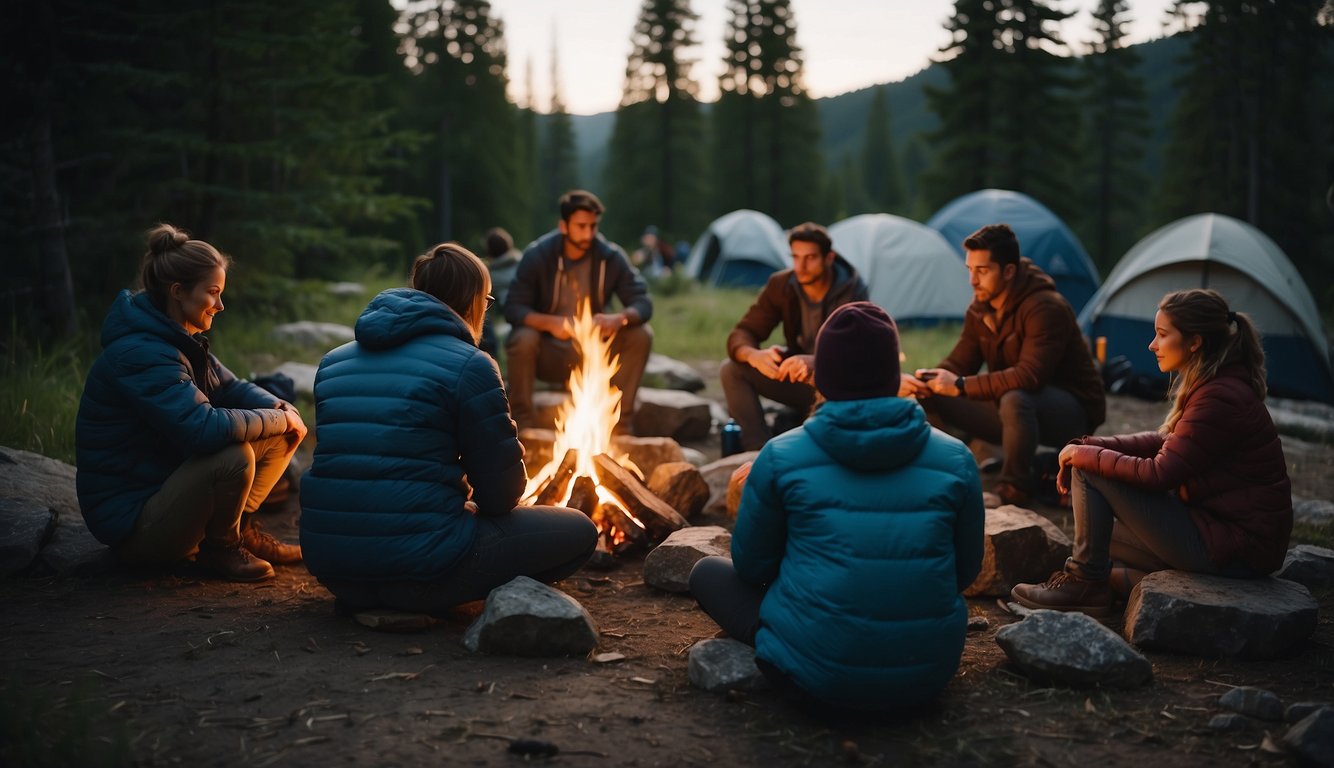
When I’m camping, I find it important to balance social interactions with the privacy of fellow campers. My experiences have taught me to be considerate, especially when the campgrounds are crowded.
Social Interactions and Privacy
I always remember that while some campers enjoy meeting new people, others value solitude. To respect everyone’s preferences, I:
- Greet politely: A simple hello can suffice to acknowledge others.
- Observe body language: If a camper seems uninterested in chatting, I give them space.
Camping During Peak and Off-Peak Seasons
Peak seasons often mean more crowded conditions, whereas off-peak periods offer more tranquility. I adjust by:
- Planning ahead: Booking my site in advance during peak times ensures I don’t encroach on someone else’s space.
- Keeping noise down: Regardless of the season, I maintain a low volume to not disturb others.
Sharing Resources and Making Friends
Campgrounds can be great places to make friends. If I find myself in a communal setting, I:
- Offer help: Lending a tool or giving advice can be a good icebreaker.
- Respect boundaries: Sharing should never compromise anyone’s comfort.
Throughout these interactions, I strive to remain respectful of other campers, fostering an atmosphere where privacy is honored, connections can flourish, and the camping experience is enjoyable for all.
Special Considerations
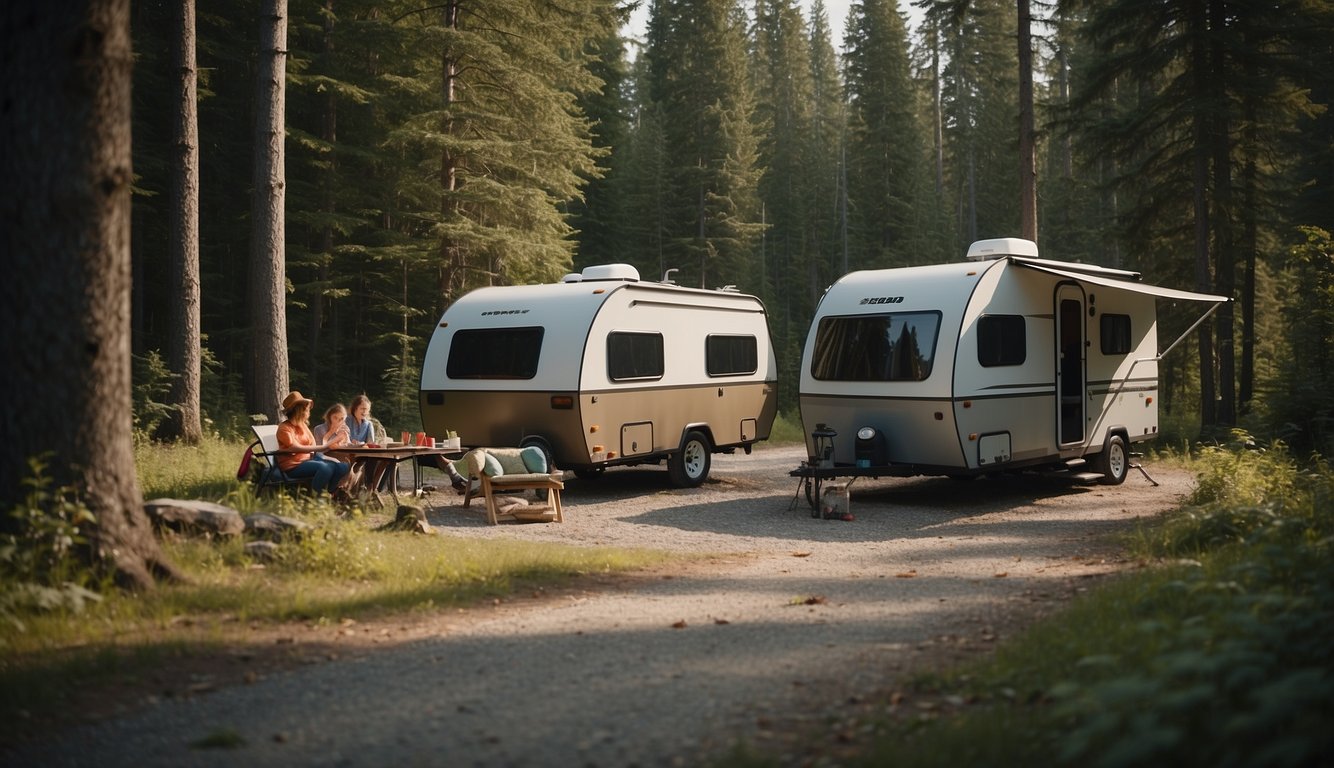
When I’m out camping, I’ve learned that there are some special considerations to remember to ensure that both nature and I stay protected. These focus on interacting with wildlife, managing smaller pests, and adapting to various terrains.
Wildlife Encounters
I always remind myself to respect the local wildlife when I’m in the woods. I make it a rule to observe animals like wild birds and critters from a distance. Direct encounters with larger wild animals should be avoided to prevent any dangerous situations. It’s important to know what species might be present and to understand how to react if I encounter them. For example, making noise while hiking can deter bears from crossing my path. Even a simple sighting can become hazardous if I don’t take the right precautions.
Managing Insects and Rodents
Camping often brings me closer to various insects and rodents. Mosquitoes can be more than just annoying; they can also carry diseases. I use insect repellent and appropriate clothing to keep them at bay. For dealing with rodents, I store my food in airtight containers and never leave leftovers out, as they can attract these critters. I also avoid areas that seem to be overrun by invasive insect species, since they can be harmful both to me and the ecosystem.
Camping in Different Terrains
The terrain where I decide to camp has its own rules. To reduce my impact on the environment, I use designated trails and campsites.
- Mountainous areas: Require sturdy footwear and careful steps to prevent soil erosion.
- Waterfront locations: I camp at least 200 feet away from bodies of water to protect riparian habitats.
- Desert Camping: I’m extra careful to pack out all waste, as decomposition is slow in arid climates.
By paying attention to these special considerations, I do my part to maintain the delicate balance of the ecosystems I enjoy during my camping adventures.
FAQ – Camping Etiquette
What are “quiet hours” at a campground, and why are they important?
Quiet hours are typically set by the campground to ensure all guests can enjoy a peaceful environment, usually during nighttime hours such as 10 p.m. to 6 a.m. It’s important to respect these hours to avoid disturbing other campers.
Is it okay to walk through other people’s campsites?
No, walking through someone else’s campsite is generally considered rude. You should always walk around other campsites unless you have permission from the occupants.
Can I leave my trash at the campsite?
No, you should always pack out what you pack in, leaving the campsite as clean as or cleaner than you found it to preserve the natural environment and for the next campers.
If you enjoyed reading about Camping Etiquette, check out our other articles:
- Bowling Etiquette 2024: Tips for Polite Play on the Lanes
- Surf Etiquette 2024: Key Rules for Sharing the Waves
- Tennis Etiquette 2024: Key Rules and Polite Play for Beginners
- Laundromat Etiquette 2024: Tips for a Harmonious Wash Day
Feel free to also check out our other Articles from the category “Etiquette & Manners“ and don’t forget to follow us on Pinterest.

